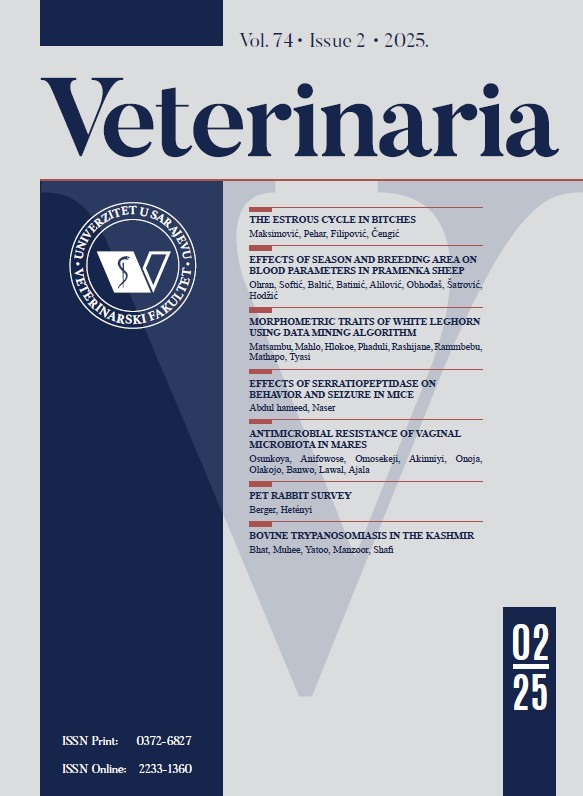Influence of iNOS to Salmonella Pullorum Disease Resistance in Sentul Chicken
Keywords:
iNOS, PCR-RFLP, Salmonella Pullorum, Sentul chickenAbstract
Breeding for resistance to Salmonella Pullorum could be an effective approach to control salmonellosis in poultry. The candidate gene approach is a useful method to investigate genes that are involved in genetic resistance. This study was designed to identify single nucleotide polymorphism (SNP) of inducible nitric oxide synthase (iNOS) associated with S. Pullorum disease resistance. Polymerase chain reaction-restriction fragment length polymorphism (PCR-RFLP) assays were used to genotype Sentul chicken. The number of leukocytes and differentiation (heterophil, lymphocyte, and monocyte) were assessed in the counting chamber by rapid methods, and disease resistance was detected by the following phagocytosis test and clearance test. The iNOS locus was polymorphic in Sentul chicken producing two alleles (T and C) and three genotypes (TT, TC and CC). The result from the analysis of the allele and genotype frequency showed that the C allele had a higher frequency than the T allele in all Sentul chicken (0.729). The association result showed that CC genotype was significantly associated (p<0.05) with S. Pullorum disease resistance in Sentul chicken, while the association was not found for TC and TT genotypes. The numbers of leukocytes and differentiation in Sentul chicken with three of iNOS genotypes (TT, TC and CC) were not statistically different (p>0.05). This is the first reported study on the association of SNP in iNOS with the Sentul chicken response to S. Pullorum. Identification of the candidate genes to improve the immune response may be useful for marker-assisted selection to enhance disease resistance.








